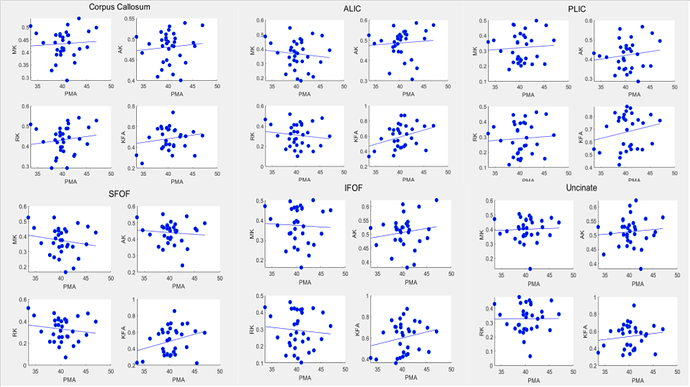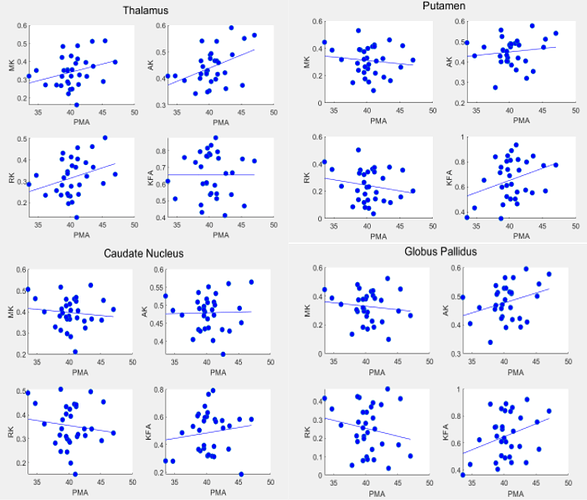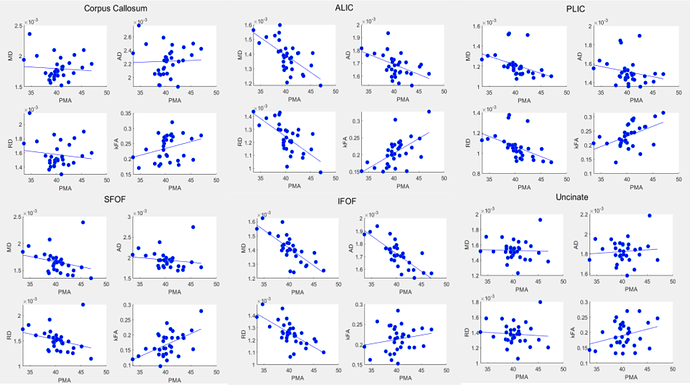Hi
I am doing a work on the assessment of DTI and DKI measures over age in both healthy and unhealthy preterm and healthy term subjects (control group).
I have preprocessed DKI data in Mrtrix3 with the standard pipeline (denoising; unringing; EPI-distortion correction; B0-field inhomogeneity correction; eddy-current and movement distortion correction) and then performed a 3d Gaussian smoothing with fwhm =1.25
I then computed both DTI and DKI maps from DK Tensor ( for better accuracy)
My doubt is about accuracy of computed DKI maps: they are expected to be more sensitive to microstructural changes both in white and gray matter , however DTI measures exhibit more significant correlations with post menstrual age and statistical significant differences between subjects’ groups.This happens also for Gray Matter ROIs, where for its definition itself DKI should represent much better physiological tissue properties.
Indeed, in scatterplots of metrics over gestational, post mestrual or post natal age DKI measures appear much more scattered than DKI ones.
What might this be due to?
@mblesac since I guess you work in this field and followed my registration between atlas and DKI images, do you have any ideas or suggestions?
thank you very much
Rosella
Here you find attached examples of the aforementioned scatterplots
Hi,
I’m not familiar with the DKI metrics, have you seen this work?. The only thing that looks a little bit odd to me is that you are performing bias field correction before eddy current, and by doing it like that I think it will affect to the output metrics. Also are you using one shell or two for the DTI metrics?
Best regards,
Manuel
1 Like
Hi. I have read that article, thank you! And as regards, bias field correction, I performed it as last step - I inverted the order of bfc and eddy, sorry. My acquisition protocol is multi-shell both for DTI and DKI : 9 b=0; 45 b=1000; 45 b=2000.
Maybe the reason is the fwhm of Gaussian smoothing too high for my data.
Thank you ,
Rosella



